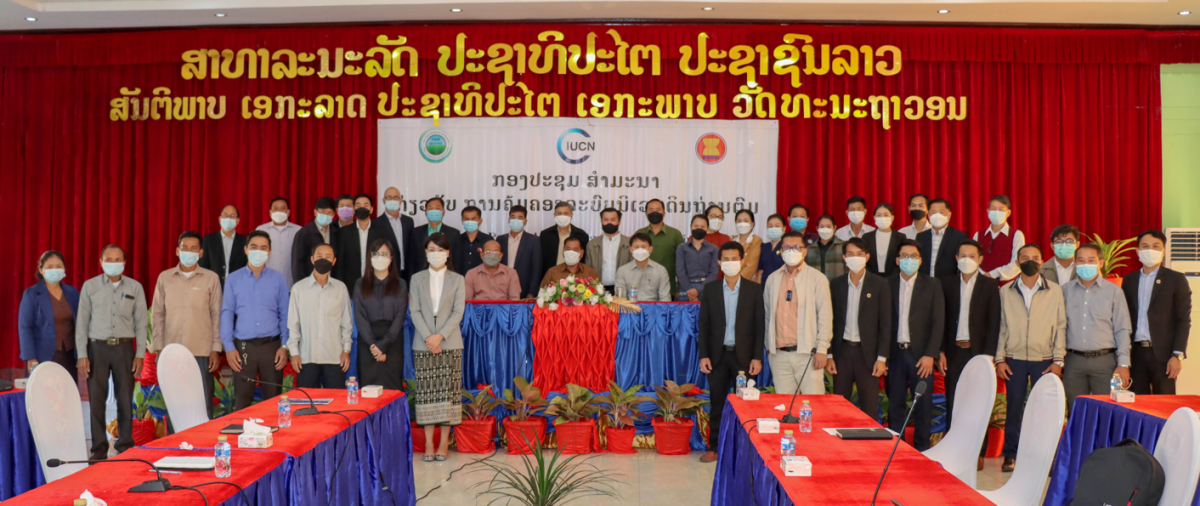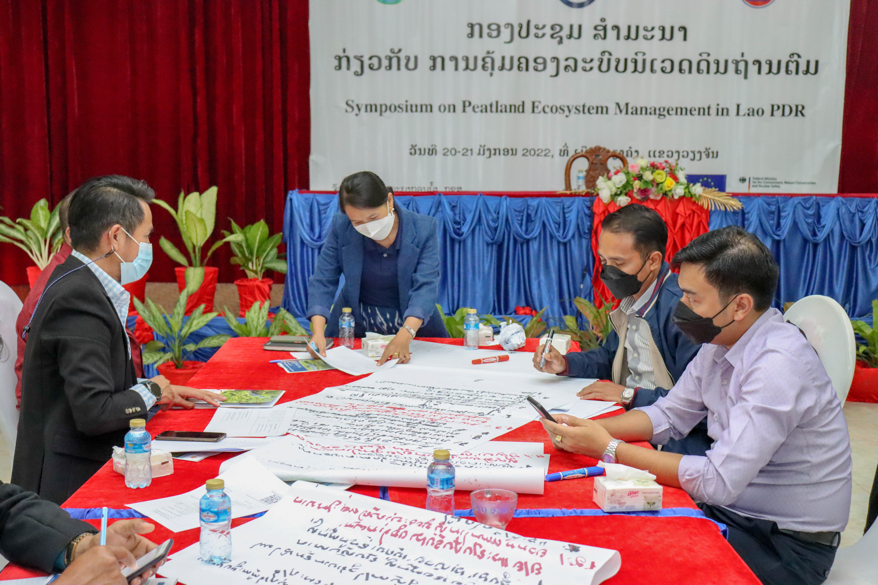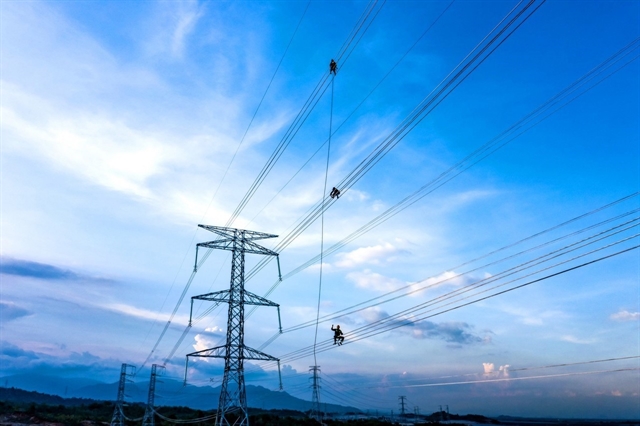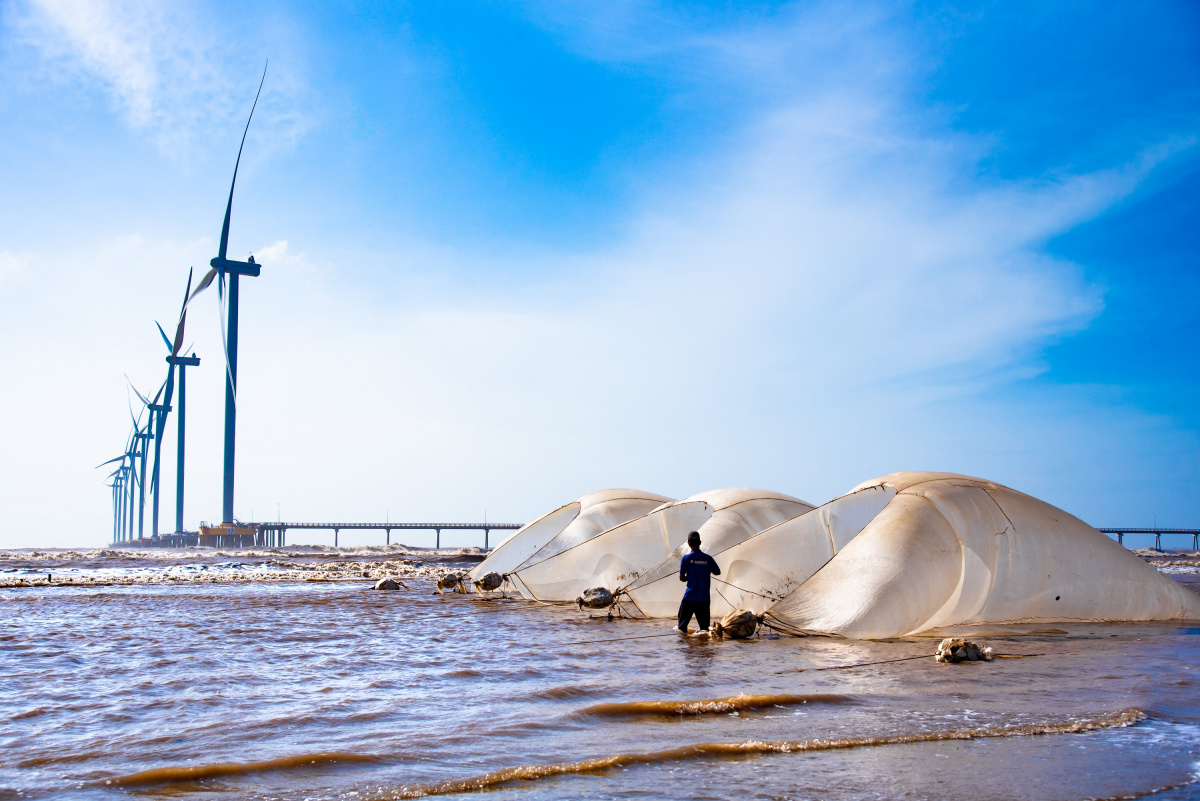Symposium on Peatlands in Lao PDR
Over the course of two days during 21 and 22 January 2022, the MONRE Vice Minister Chanthaneth Boualapha presided over Lao People’s Democratic Republic’s (Lao PDR) first ever Symposium on Peatlands, held in Viengkham Districts, Vientiane Province.
What are peatlands - peatlands are a type of wetland that are formed from partially decomposed plant materials (roots, leaves, stems etc.) that have accumulated over long periods of time, sometimes over thousands of years. Peatlands in Lao PDR have not yet been fully inventoried or described in detail. This lack of knowledge leaves them vulnerable to exploitation and degradation.
The Symposium gathered together around 70 participants, including Government officials, international and Lao experts, and community leaders, to share knowledge and experiences and discuss ways to improve the management of peatland ecosystems in Lao PDR.
The event was supported by two regional peatland projects currently being implemented by the Department of Water Resources (DWR) under the Ministry of Natural Resources and Environment, in partnership with the International Union for the Conservation of Nature (IUCN).
Both projects have a focus on identifying, assessing and mapping peatlands across Lao PDR, and activities designed to help conserve and sustainably manage peatland ecosystem resources.
The two projects include (1) the Sustainable Management of Peatland Ecosystems in Mekong Countries (the Mekong Peatlands Project) - implemented in Lao PDR Myanmar and Cambodia, and funded by the Global Environment Facility (GEF); and (2) the Sustainable Use of Peatlands and Haze Mitigation in ASEAN (SUPA) Component 1Programme, being implemented across the ASEAN region. SUPA Component 1 is co-funded by the European Union and Government of Germany.
On day one of the Symposium, presentations were given by experts from IUCN, DWR, Wildlife Conservation Association (WCA) of Laos, the National University of Laos (NUOL), and the Centre for Development and Environment (CDE) – all of which are involved in separate peatland projects and research currently being undertaken in Lao PDR.
As commented by Vice Minister Chanthaneth Boualapha “as peatland management is a new experience for Lao PDR, there is an urgent need to incorporate peatlands into existing policies and laws and develop specific regulations so that peatlands are recognized, conserved and managed sustainably”.
IUCN’s Chief Technical Advisor Dr Peter Hanington made a comment that “the current interest in peatlands in Lao PDR is a result of commitments made by the Government of Lao PDR under several ASEAN agreements that focus on improving peatland management and reducing haze pollution events in the region –major haze pollution events occurred in 2015 and 2019 that were a direct result of major peatland fires in the region”
”another important reason for the interest in peatlands is the fact that they store a significant amount of carbon – there is more carbon contained in peatlands across the globe than all of the worlds above-ground forests all combined. Maintaining these carbon stores in their natural condition plays an important role in the global effort to combat climate change”.
After lunch, the symposium visited a nearby peatland – Nong Youp, Nonsavang Village, Viengkham District, Vientiane Province where participants were given demonstrations on how to identify peat soils, what techniques are used for sampling peat soils, and how peatlands are surveying and mapped using a combination of ground surveys and drones.
The peatland at Nong Youp is likely to be several thousand years old, with recent surveys having identified peat at depths of up to 3 to 4m below the ground surface. Peat typically accumulates at a rate of 0.5 to 2mm per year.
Close to Nong Youp are two other peatlands, called locally as Nong Phangdeng and Nong Khuay, which in contrast to Nong Youp, are very young peatlands with a layer of peat only around 10 or 12 cm in depth. The peat layers at Nong Phangdeng and Nong Khouy have developed on the surface of the lake as “floating” peat mats. Locals say that these floating peat mats only started appearing since 1988.
Both Nong Youp and Nong Phangdeng peatlands were recently assessed for their biodiversity values by an expert team from DWR, WCA, NUOL and IUCN, with the results to be published in the coming weeks. Further studies focused on carbon storage, water management and community use are underway and will help to document the values and functions of these two important peatland ecosystems.
Day two of the symposium focused on discussions on peatland management and sustainable use of peatland resources. Presentations were given by Vientiane and Champassak PONREs, followed by presentations from the Global Environment Centre, based in Malaysia.
A key point highlighted from these presentations was the urgent need for Lao PDR to strengthen peatland governance and regulations at national and sub-national levels to improve the recognition, conservation and management of peatlands.
The Symposium provided the opportunity for key stakeholders to discuss and prioritise activities under the various projects and programmes over the course of 2022.
GIZ outlined current and future areas of technical support available under the SUPA Component 1 Programme. At present, SUPA Component 1 is providing assistance to DWR to map potential peatlands starting in Vientiane and Champassak Provinces, and then will focus on other provinces across Lao PDR, including Attapeu, Savannakhet, Khammouane, and Bolikhamxay, where peatlands and either known and/or likely to exist. In addition to peatland mapping, GIZ is open to provide other technical support within the scope of SUPA Component 1. GIZ would like to encourage and invite any potential stakeholders from Lao PDR for further discussion to support future potential activities.
Under Component 2 of SUPA, the People for Peat Programme outlined opportunities for Lao NGOs and the private sector to be involved in peatlands, through their Peatland Businesses Hub. Already two research projects funded by People for Peat are being implemented by NUOL and CDE in Champasak Province and Vientiane Capital. SUPA Component 2 extended the application to the Business Hub Accelerator Programme to interested projects operating on peatlands in Laos.
The Symposium concluded with a workshop session where all participants discussed ways to further collaborate and share their experiences and data. Participants identified opportunities where peatland policies and management can be improved, and ways to promote sustainable use of peatland resources in Lao PDR.
The Symposium noted that the key areas for further actions throughout 2022 are to: complete peatland surveys to support the mapping of peatlands across Lao PDR; strengthen peatland management though mainstreaming peatland actions into policies, strategies and management frameworks; improve the livelihoods of communities living and using peatland resources; and build local capacity and awareness of the values of peatlands, and the need to conserve and sustainably manage peatland resources.
Further information can be obtained from: mekong.peatlands@iucn.org or info.loa@iucn.org and https://www.giz.de/en/worldwide/81673.html






